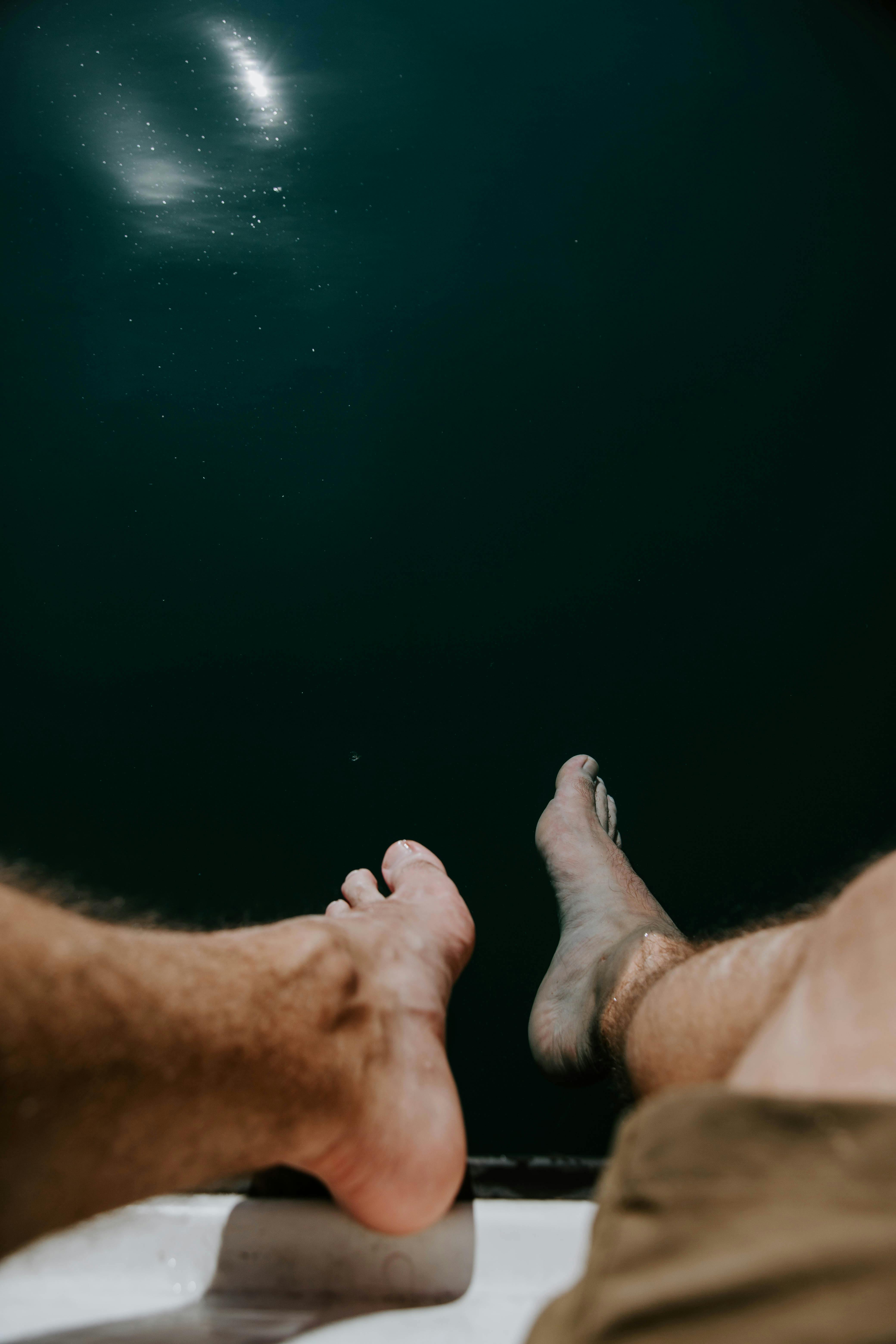Some Basic Principles Of Plantar Fasciitis Treatment
For some athletes, simply altering running shoes can considerably ease plantar fascia discomfort. A physiotherapist can employ a variety of different taping techniques to support the plantar fascia, providing it a possibility to recover. Some shoes can be fitted with inserts. One example is an orthotic, which covers the length of the shoe.
Another option is a heel cup. This insert is developed to support and cushion the heel. Plantar fasciitis is associated with less versatility in the ankle, Achilles tendon, and calf muscles. Mild stretching to improve versatility can make the biomechanics of standing, walking, and jogging less demanding for the plantar fascia.
Using mild pressure, roll the tennis ball back and forth under the foot. Stand 18 inches far from a wall with feet about 6 inches apart and place hands against the wall, at shoulder height. Without moving feet, lean into the wall, flexing the foot and extending the Achilles tendon and calf muscles Rest on the floor with legs straight in front.
Top benefits of Plantar Fasciitis Treatment
Stretches like these last 2, in which the top of the foot and toes move toward the shin, are called dorsiflexion stretches. Applying a cold-pack or bag of ice to bottom of the foot may supply discomfort relief from plantar fasciitis. Relief can also be discovered by rolling the bottom of the foot on a frozen plastic water bottle.
Protocol Principles. For runners, increasing the number of actions per mileusing a shorter stride but increasing cadence to maintain speedmay reduce the tension on the plantar fascia even though there will be more steps per minute.1.Extra weight puts an increased stress on the plantar fascia tissue. Shedding excess pounds will lighten the load on the body's musculoskeletal system, consisting of the plantar fascia.
This avoids the plantar fascia from resting in a contracted position. (Not surprisingly, lots of people find these splints hard to oversleep.). While it is not considered basic treatment, deep myofascial massage might promote blood flow and recovery. While not all specialists concur, some believe the use of manual manipulation/mobilization (by a chiropractor or other competent health professional) in addition to exercise is an efficient way to treat plantar fasciitis.2, Individuals with persistent, moderate to extreme cases of plantar fasciitis, might use these non-medical treatments in combination with medications, injections, or surgical treatments.
Exploring everything Plantar Fasciitis Treatment has to offer

Medications are not a cure for plantar fasciitis and need to be utilized in conjunction with other treatments. Non-steroidal anti-inflammatory drugs are used to reduce swelling and swelling, and are recommended for clients experiencing moderate to severe discomfort (Look At More Info). NSAIDs include aspirin (e.g. Bayer), ibuprofen (e.g. Advil), naproxen (e.g. Aleve), and cox-2 inhibitors.
dexamethasone) through healthy skin to the sore area.1 Iontophoresis may be advised to patients with plantar fasciitis who can't tolerate injections or desire to prevent injections. If non-medical treatments and medications do not offer remedy for plantar fasciitis, patients may think about injections. 1. Wellenkotter J, Kernozek TW, Meardon S, Suchomel T.

Int J Sports Med. 2014; 35( 9 ):779 -84.2. Bronfort G, Haas M, Evans R, Leininger B, Triano J. Effectiveness of manual therapies: the UK evidence report. Chiropr Osteopat. 2010; 18:3.3. Clar C, Tsertsvadze A, Court R, Hundt GL, Clarke A, Sutcliffe P. Medical efficiency of manual treatment for the management of musculoskeletal and non-musculoskeletal conditions: systematic review and update of UK evidence report.
FAQ Friday: Why Does Plantar Fasciitis Treatment Matter for My ...
The plantar fascia is a long, thin ligament present along the bottom of the foot that produces the arch of the foot. It extends from the heel bone, and after that divides and fans out to attach itself to the toes. Plantar fasciitis is a condition where the plantar fascia ends up being inflamed from overstretching or overuse, triggering pain in the heel and bottom of the foot.
Plantar fasciitis occurs when you strain or irritate the plantar fascia ligament. Repeated stress can lead to small tears in the ligament, causing discomfort and swelling, which can make strolling tough. Pressures can take place due to: High or low foot arch Weight problems or unexpected weight gain Tight Achilles tendon which connects the calf muscles to the heel Starting a brand-new activity or increasing the intensity of an activity Wearing inappropriate shoes with soles that are too soft, do not fit well or offer poor arch support The major grievance of plantar fasciitis is pain and tightness in the heel and foot.
Your doctor might enjoy how you stand and stroll, and examine associated conditions such as high arches. X-rays of the foot can be taken if your physician thinks a tension fracture, a hairline fracture in the bone, or other related conditions such as a heel spur, which is additional calcium deposit on the heel bone.
The Best Way to Plantar Fasciitis Treatment in 2020
Conservative treatment steps include: Rest: Rest is the initial step that is considered for minimizing discomfort and avoiding additional damage to the ligament. Ice: Rolling your foot over ice can be very reliable in reducing swelling, and is recommended for 20 minutes, 3-4 times a day Medications: NSAIDs (non-steroidal anti-inflammatory drugs) might be prescribed for relief of discomfort and inflammation Exercise: calf stretches and plantar fascia stretches are efficient in easing discomfort A steroid injection may be administered into the plantar fascia for reducing discomfort and inflammation Helpful shoes and orthotics may likewise be suggested to lower the pain while walking or standing Night splints can be recommended by your physician to assist stretch the plantar fascia while sleeping Physical treatment may be advised for instruction on stretching workouts, massage and ice treatments PT might utilize extracorporeal shockwave therapy (ESWT), which utilizes high-energy shockwave impulses to stimulate healing of the damaged plantar fascia tissues Surgical treatment is thought about only if conservative therapy does not offer effective relief after 12 months.
Gastrocnemius recession: Tight calf muscles or gastrocnemius muscles can strain the plantar fascia. To release this stress, your cosmetic surgeon will surgically extend the calf muscle, and increase the movement of the ankle (Web Link). The surgical treatment can be performed by open incision or endoscopically through a little cut by utilizing an endoscope, which is a long instrument with a little electronic camera attached.
Your cosmetic surgeon will partly cut the plantar fascia ligament to ease the tension. The surgical treatment can be carried out endoscopically however open incision is much easier to carry out and is associated with lower risk of nerve damage. Problems are rare following surgical treatment to deal with plantar fasciitis, however similar to any surgical treatment, they can happen.
Does Plantar Fasciitis Treatment Still Matter for Customer Service in 2020
If you are experiencing symptoms of plantar fasciitis, thorough treatment from our foot specialists is readily available at ORA Orthopedics. As the biggest and most sophisticated orthopedic practice in the Quad Cities, ORA Orthopedics uses the greatest options in care to kids and adults with a large selection of musculoskeletal conditions, consisting of plantar fasciitis and other uneasy or painful foot issues (See This Here).
This condition is generally marked by greater foot pain and tightness after not during workout or extended durations of lack of exercise. Plantar fasciitis might likewise cause bone stimulates, or small boney growths, to establish on the heel bone. The experienced doctors and staff at ORA Orthopedics' Foot and Ankle Center of Quality are trained in the newest treatment methods and use patient-focused care that is second to none in the Quad Cities.
No comments:
Post a Comment